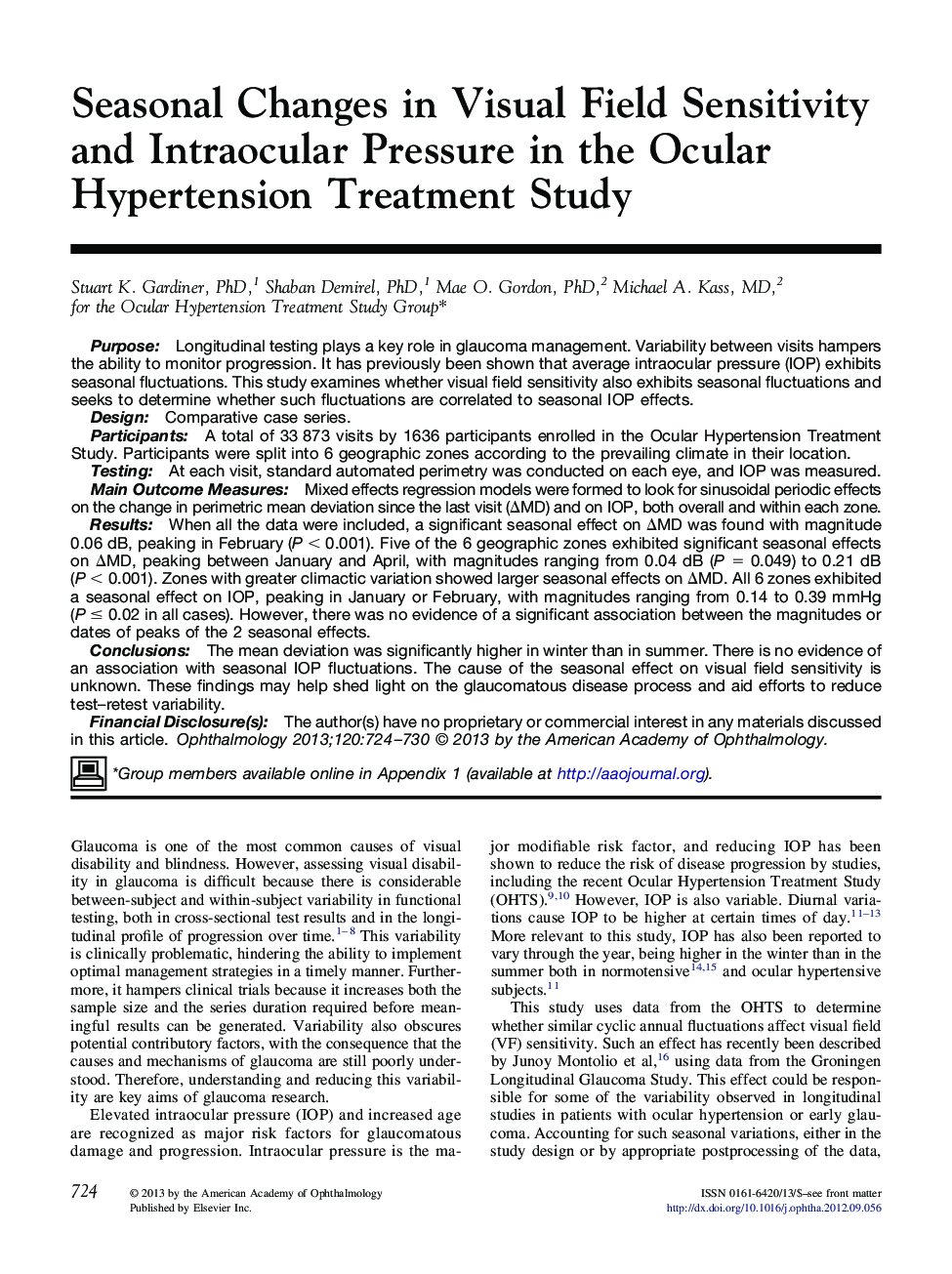| کد مقاله | کد نشریه | سال انتشار | مقاله انگلیسی | نسخه تمام متن |
|---|---|---|---|---|
| 4026731 | 1262441 | 2013 | 7 صفحه PDF | دانلود رایگان |

PurposeLongitudinal testing plays a key role in glaucoma management. Variability between visits hampers the ability to monitor progression. It has previously been shown that average intraocular pressure (IOP) exhibits seasonal fluctuations. This study examines whether visual field sensitivity also exhibits seasonal fluctuations and seeks to determine whether such fluctuations are correlated to seasonal IOP effects.DesignComparative case series.ParticipantsA total of 33 873 visits by 1636 participants enrolled in the Ocular Hypertension Treatment Study. Participants were split into 6 geographic zones according to the prevailing climate in their location.TestingAt each visit, standard automated perimetry was conducted on each eye, and IOP was measured.Main Outcome MeasuresMixed effects regression models were formed to look for sinusoidal periodic effects on the change in perimetric mean deviation since the last visit (ΔMD) and on IOP, both overall and within each zone.ResultsWhen all the data were included, a significant seasonal effect on ΔMD was found with magnitude 0.06 dB, peaking in February (P < 0.001). Five of the 6 geographic zones exhibited significant seasonal effects on ΔMD, peaking between January and April, with magnitudes ranging from 0.04 dB (P = 0.049) to 0.21 dB (P < 0.001). Zones with greater climactic variation showed larger seasonal effects on ΔMD. All 6 zones exhibited a seasonal effect on IOP, peaking in January or February, with magnitudes ranging from 0.14 to 0.39 mmHg (P ≤ 0.02 in all cases). However, there was no evidence of a significant association between the magnitudes or dates of peaks of the 2 seasonal effects.ConclusionsThe mean deviation was significantly higher in winter than in summer. There is no evidence of an association with seasonal IOP fluctuations. The cause of the seasonal effect on visual field sensitivity is unknown. These findings may help shed light on the glaucomatous disease process and aid efforts to reduce test–retest variability.Financial Disclosure(s)The author(s) have no proprietary or commercial interest in any materials discussed in this article.
Journal: Ophthalmology - Volume 120, Issue 4, April 2013, Pages 724–730